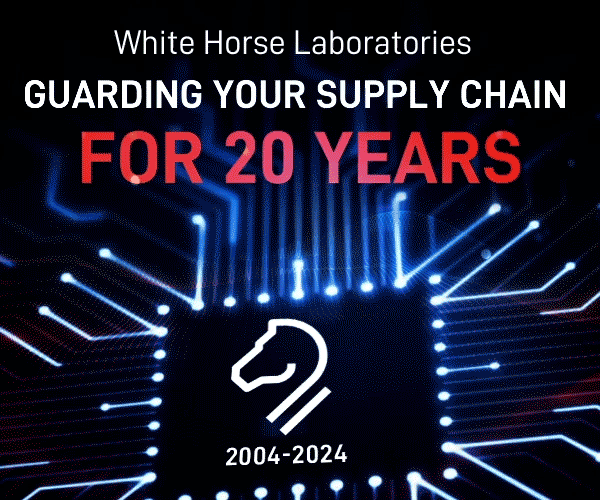Digital Fire-Fighting
By: Michael Ford, Aegis Software

If assembly manufacturing were a brain, quality management is the “bi-polar” area. Quality first is paramount today, even for the most humble of products. With almost everything we interact with containing some form of dependency on electronics, the importance of quality and safety is no longer confined to clearly defined mission critical applications. The classic manufacturing management mandate is that the operation should never accept any compromise when it comes to the quality of the products. But then… Quality management has always been very expensive, and you could argue that there is no direct added-value from any quality activity. If production would just always get it “right first time”, then all of the test and inspection processes could be removed, including AOI, ICT incoming material inspection, quality assurance checks, sampling on machines and in finished goods etc. This would, in many cases shave off as much as half of the cost of manufacturing if only it could be guaranteed to manufacture everything correctly.
As a result of this contention, there have been attempts to redefine quality management over the years. Instead of the inspection of all incoming materials, trusted supplier programs evolved that provide an adequate level of assurance. Taking potential issues “up-stream”, managing and controlling the source provides a lower cost of quality assurance, is less destructive and therefore an acceptable alternative. Likewise, instead of testing and inspecting every PCB after every critical process, we can use our digitized factory data to identify which PCBs have been produced that have experienced any form of exception during the manufacturing process. It is after all the exceptions that cause defects. If a PCB has been assembled so far in exactly the same way as the one prior, without anything like a machine stop, a material change, a delay, a human touch etc., then any test result is very likely to be identical to the prior PCB, so, the value of this test reduces. Could we dependably assume the result and not bother testing?
Collecting data in the digital factory is becoming an essential quality tool. Having a unique defect in a work-order of a thousand pieces was once a major issue that could never be solved. It would cause a lack of confidence in the process, not knowing if or how other products may have related weaknesses. Today, we use our digital factory data to discover what were the exact unique conditions that occurred in the manufacture of this defective unit that differentiated it from all of the others. We can see the complex set of conditions that formed the cause of the unique defect. Here also is the evidence that other production units in the work-order did not have the same conditions and so they are good to be shipped. The digital traceability build record is a powerful tool for quality. As the data coming from manufacturing is live, this process makes a very effective “smoke detector”. Should any repetition of a defect happen, an alarm can be sounded to signal a potential epidemic, so as to prompt immediate action before any further defects of the same type have the opportunity to occur. Traceability data creation as part of the digital factory process represents an almost zero cost, reduced manpower requirement, reduced inspection and testing times, all of which generate potential savings once quality is under digital control. Based on this, it sounds as though the digital factory has the latest incarnation of quality management all wrapped up.
Unfortunately, not quite. Fire-fighters today however have long-since learned an important lesson. They don’t just put out the fires. Fire-fighters work to uncover risk, to educate people, to recommend the use of fire-retardant materials in high-risk areas, and create procedures that ensure that the risk of fire is reduced or eliminated. There have been similar tools available in manufacturing to do similar things for quality hot-spots for some time now, the most popular guises of which are CAPA (Corrective and Preventive Action ) and FRACAS (Failure Reporting, Analysis, and Corrective Action System), though there are many other permutations with similar names. Each of these methods and techniques ensure an almost forensic analysis of a defect event or exception occurrence, such that triggers, measurements, causes, actions and preventative methods are all properly defined, ordered, executed, documented, and of course, remembered. In today’s digital factories, the data belonging to virtually all recorded exceptions and defects resides within the digital factory management platform. It therefore makes sense to have CAPA / FRACAS management as an integrated part of the digital factory platform. Digital associations and tags can be generated and exchanged with the CAPA / FRACAS processes which will ensure that both aspects of the quality management arsenal are linked and kept in synch. Having a fully defined and actioned CAPA / FRACAS procedure in place, it is likely that new or modified operational rules and procedures are defined, which in many cases will then be configured into the digital manufacturing operation configuration, thereby preventing the recurrence of defects, whether of the one-off kind where a specific set of unique circumstances needs to be avoided, or, the correct procedure to avoid a specific epidemic problem from occurring. CAPA / FRACAS cases can affect all parts of manufacturing, including the supply-chain, engineering and manufacturing execution, which are also all parts of the digitalized factory.
To describe a completely “fire-proof” factory, is to digitalize the entire operation, ensuring that the complete digital traceability record is captured in line with level 4 of the IPC-1782 traceability standard. To achieve this, all data should be collected from processes automatically, for example using the IPC-CFX specification. The understanding of the digital product model should be done using, for example, IPC-2581. Putting all of these together, on a digitalized modern platform specifically designed for this new technology creates the environment in which digital CAPA / FRACAS can be fully integrated. Now that we are in 2018, anything less than this may once have been good, but is now outdated.











